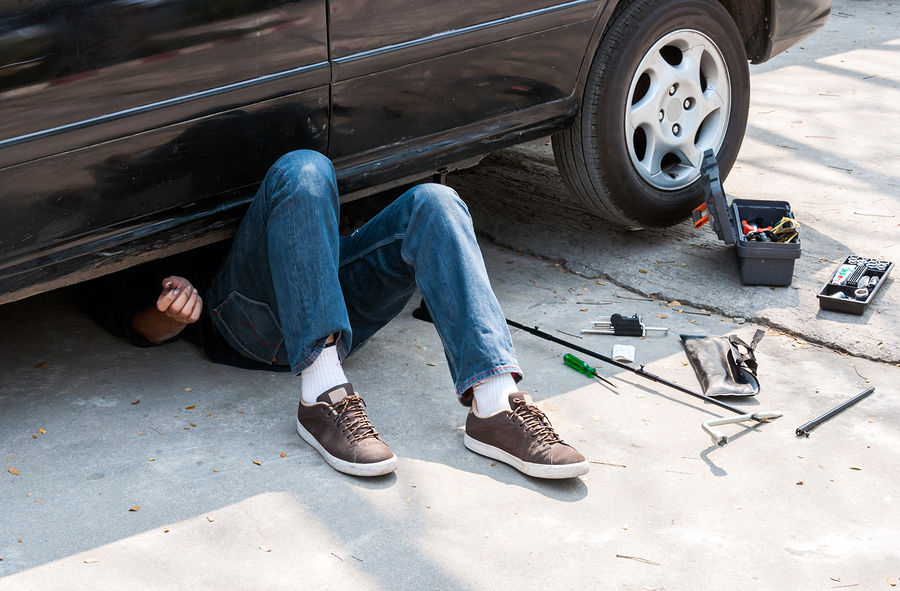Recent Articles
Popular Makes
Body Types
Basic Car Maintenance

Basic maintenance is something every car owner should know. Being able to check the engine oil, the pressure of the tires and the overall condition of the brakes can save you money, and you won't need to rely on a mechanic for maintenance that you can do yourself. With a few basic tools the job is done in little time. Here are a few simple maintenance checks that may prevent costly vehicle repairs. Before you start checking under the hood, follow a few safety instructions. • Pull long hair back • Remove jewelry • Secure any loose clothing • Wear rubber gloves The fluids in your car should be light-colored and clear. Dark or opaque colored fluids is the clue that it is time to replace them. Most fluids should be checked when the car is cold and on a flat surface. The reservoir that holds the brake fluid is located at the back of the engine compartment. • Always clean the top of the reservoir before removing the cap to keep the brake fluid as clean as possible. • Visually check to see if the fluid is low. • Fill carefully to the max fill line. • Use the appropriate fluid for your vehicle. It is specified on the cap. The engine oil port is typically located at the front of the engine. • Pull the dipstick out. • Clean the dipstick off by running it through a rag. • Replace the dipstick into the chamber to the full extent and pull it out again to check that the oil level is between the upper and lower limits on the dipstick. • If the level is low, find the oil filler cap on top of the engine and marked 'oil'. • Unscrew the cap carefully and place to one side. • Pour in a small amount of new oil and recheck the level with the dipstick. • Repeat until the level is about halfway between the maximum and minimum marks on the dipstick. • Be sure to use the correct grade of oil, specified in your owner's manual. • If your engine doesn't have the right amount of oil, it could be seriously damaged, sometimes beyond repair. • If the oil is dirty, change it. To see if your oil is dirty, compare its color to some fresh oil spread on a white sheet of paper. Check your owner's manual. The power steering fluid reservoir can be hard to find as it is different on different vehicles. • Remove the cap. • Check the dipstick to see that the fluid is above the minimum mark. • If it is low, carefully fill and recheck the dipstick. The reservoir should be visible near the front of the engine. Visually check the fluid level with a flashlight. Check the transmission fluid while your car is in park and idling. Generally, the dipstick top is red. • Pull the dipstick out, wipe it with a clean cloth and reinsert it. • Pull it out again and read the fluid level. • Sniff the fluid to make sure it doesn't smell burnt. The fluid will have a pinkish tint when it is in good condition. If fluid needs to be added, place a funnel directly into the dipstick opening and carefully add the fluid. Recheck levels with the dipstick. Driving on tires in poor condition or incorrectly inflated is dangerous. Check your owner's manual for the correct pressure. This important aspect of auto safety must be checked often for pressure and wear and tear. • You'll get a falsely high reading if you check tires after driving for more than a few minutes. Always check tire pressures before driving. • It is common for the front and rear tires to require different pressure amounts. • If the amount on the pressure gauge is below that mentioned in your owner's manual, you will need to inflate the tire. Connect an air line at an air station and fill until the right amount is shown on the pressure gauge. • If you over-inflate a tire, depress the pin in the center of the valve to release some air. • Don't forget the pressure of your spare wheel. Place a penny into one of the tread grooves with Lincoln's head pointing down. If the tread is lower than Lincoln's hair, your tires need to be replaced. If his hair is covered, your tires are fine. Be sure to check all four tires because they may wear at a different rate. If the engine sounds rough or you can hear a blowing sound, the exhaust may have a leak. Push down on each corner of the car and then release. If it bounces, the shock absorber at that corner may need to be replaced. Pump the brake until the pressure builds up and the pedal becomes rigid. Hold your foot on the pedal, feeling for any loss in pressure. • If the pedal starts to give way, there is a leak in the system. • If there is a great deal of pedal movement before the brakes begin to bite, the brakes need adjusting. • If the pedal feels spongy and braking lacks sharpness, this indicates air in the system. A home brake bleed kit can cure this. Brakes are crucially important for safety and complicated to fix. Have an authorized service center perform repairs and adjustments. Ask the service center to check the overall condition of the braking system.